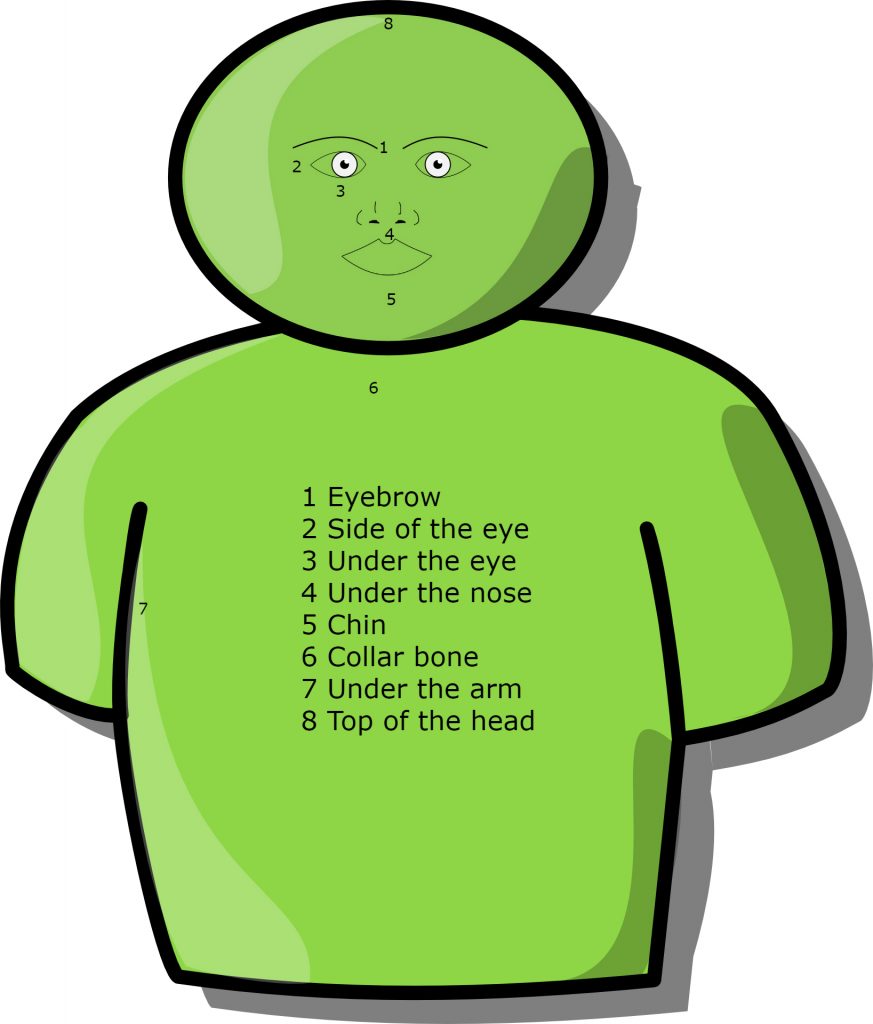


Tapping is a way to release anything that is holding you back in your story and energetic history.
These mindsets and related emotions can be associated with considerable pain or trauma. The aspect that underpins all these themes is fear. It may show expression as physiological pain, anxiety, sadness, or inability to act.
This blog describes the tapping process and some of its applications for the removal of fear however it is showing up in your life.
Step 1 – Identify Your Topic
Identify your topic. This could be anything that is a cause of contraction, suffering, or pain.
Perhaps you have a physical pain such as a headache. You might be dealing with an actual condition such as hypertension, diabetes, or arthritis. It could be a negative emotion or feeling such as anger or sadness.
Maybe there is a specific situation or part of your narrative that impacts your ability to function effectively. There could be a behavior, such as a habit of saying yes too easily or an addiction to alcohol or vaping. It could even be resistance to tapping as a healing modality.
Pick one pressing topic for your round of tapping. Additional topics can be deferred for later rounds.
Step 2 – Notice the Intensity
Note the intensity it has for you on a scale of 0 to 10 with 0 being a minimum interference to 10 being a maximum disruption. This provides a benchmark for progress as you tap.
Step 3 – Tap on the Karate Chop Point

Give a setup statement three times as you tap on the karate chop point or side of your hand. This usually takes the form of acknowledgment of the issue followed by acceptance. For example: “Even though I … (state point of concern here), I deeply and completely love and accept myself.” The karate chop point is associated with the small intestine meridian.
Step 4 – The Tapping Sequence

Complete several rounds rotating through the tapping points speaking on the topic you identified. Do not worry about what you say. It is not important whether it is grammatically correct or in complete sentences or even that you find exactly the right words for your meaning. You can even use the repetition of the same few words or a metaphor or visualization of the context. The process is extremely adaptable and directs the focus where it needs to go. Just use your unedited stream of consciousness. Whatever words, phrases, or descriptions come to mind to do with the pain point you have identified and all the negative impacts it has on you.
You can tap both sides or just one and with several fingers or just one, the process is forgiving. The activation of the meridians is also not dependent on the amount of pressure you use.
Eyebrow: bladder meridian
Side of the eye: gallbladder meridian
Under the eye: stomach meridian
Under the nose: governing vessel (Yang)
Chin: central vessel (Yin)
Collarbone: kidney meridian
Under the arm: spleen meridian
Top of the head: governing vessel (Yang)
Finish by taking a deep breath. Inhaling through the nose and out through the mouth with a sigh.
Here is a video by Jessica Ortner host of the annual Tapping World Summit which provides a full demonstration of how to tap.
Step 5 – Revisit the Intensity
Usually, the intensity of your identified topic drops as you proceed with rounds of tapping. Occasionally, however, the intensity on the 0 to 10 scale can go up. Do not be put off by this, but keep doing rounds until it reduces. It simply indicates that you have hit upon a key area that may have been partially suppressed.
Step 6 – Repeat or shift
If the intensity is still 5 or above repeat the process. You can begin to add being open to new possibilities to your stream of consciousness.
Watch my video demonstration of the process with a script targeted at releasing fear. As you follow along with me mirror the actions and repeat the phrases as an echo.
Tapping Resources
Frequently asked questions about EFT Tapping
Gary Craig founded the Emotional Freedom Technique called Tapping and more detail on this topic can be found through his excellent explanation and training for those new to the technique.
Dawson Church has a fantastic free training that provides a thorough introduction to Tapping supported by videos and research on its use.
Here are some other excellent video resources where Stefan Gonick demonstrates tapping and explains the mechanism and process. Stefan uses a slightly different point order and adds a wrist point, but the idea is the same.
Brad Yates also has a significant library of videos if you would like more examples to guide your tapping and to tap along to.
One universal mantra or affirmation you can use as your stream of consciousness as you tap is Ho’opononopono. This consists of the phrases, I’m sorry, Please forgive me, Thank you, I love you.
I personally find this to be a powerful practice in the self-coaching toolbox. I hope you will too. Happy Tapping. Let me know below how this technique has made a difference for you.
Image by Oberholster Venita & Clker-Free-Vector-Images from Pixabay